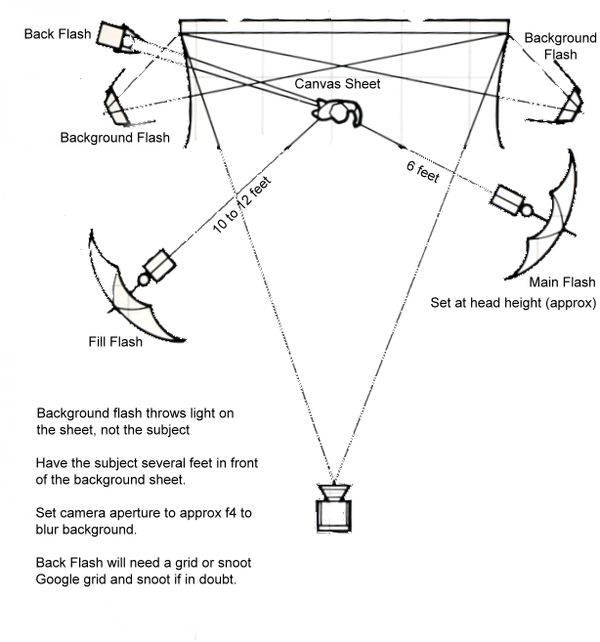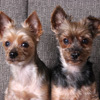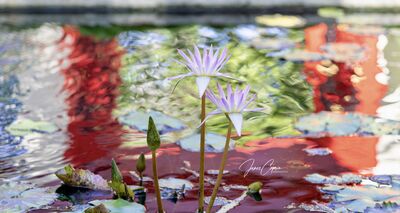At Home Photo Studio
Aug 7, 2012 13:16:42 #
CaptainC wrote:
OK - full explanations at the start would help. Yo... (show quote)
Like your pictures. Very nice
Aug 7, 2012 14:00:58 #
follow the captainC advice...you do not need more light. bump up the iso.
are your umbrellas shoot thru or reflective?
like the captain said...start out with one light.
your 430 flash should put out enough light to get some great photos
are your umbrellas shoot thru or reflective?
like the captain said...start out with one light.
your 430 flash should put out enough light to get some great photos
Aug 7, 2012 14:03:43 #
CaptainC wrote:
OK - full explanations at the start would help. Yo... (show quote)
i agree 100% with buying a meter!!! i use sekonics 308s (it's a cheaper model) and it works great. tells me how to set my camera to make great exposures every time.
Aug 7, 2012 14:09:43 #
wow I'm new too. Just want to say this thread is good stuff hope all us newbies get to see it. great stuff here thank you all. very nice!!!!
Aug 7, 2012 14:38:56 #
There are many resources on the web but I have learned quite a bit from Phil Steele. http://steeletraining.com/tutorials_access.htm He has many free tutorals and some that you purchase. He is mainly a Canon guy so you will like that. I use 3 Nikon speedlights and I really like it. You have a lot of control adn they are easy to take with you. I use 1, 2, and somtimes 3. Hope the link helps you.
Aug 7, 2012 16:41:43 #
Aug 7, 2012 16:42:10 #
Aug 7, 2012 16:48:58 #
Toptrainer,
Lots of great advice...I have one thing to add....IRON!!!!!!!
Lots of great advice...I have one thing to add....IRON!!!!!!!
Aug 7, 2012 17:13:32 #
sixshooter wrote:
Toptrainer,
Lots of great advice...I have one thing to add....IRON!!!!!!!
Lots of great advice...I have one thing to add....IRON!!!!!!!
Good answer! But I bet loads of us have got great advice here from all the posters, thanks also for sharing your "Barry White" experiences lol.
Aug 7, 2012 17:43:28 #
I agree with all the above advice. Here's a graphic to help you layout your studio(permanent or temporary).
CaptainC and others make suggest changes. This is pretty old but it works.
CaptainC and others make suggest changes. This is pretty old but it works.
Studio Layout

Aug 7, 2012 17:58:34 #
Shakey wrote:
I agree with all the above advice. Here's a graphic to help you layout your studio(permanent or temporary).
CaptainC and others make suggest changes. This is pretty old but it works.
CaptainC and others make suggest changes. This is pretty old but it works.
Shakey - I agree with you in principle, but not for a beginner. I really do believe in learning how to light with ONE light. You can add reflectors, but just ONE. If you cannot get good images with one, more is not the answer. :-)
Using one light teaches light and shadow placement.
I would disagree with your diagram in only one area: The main light needs to be higher than head height. That is one of the MOST common errors. WE want the nose shadow to fall DOWN at 30-45 degrees. Placing the main at head height, has the nose shadow falling straight across. Not the worst thing, but down at an angle is more natural and pleasing.
The fill light can be where you put it or right over the camera. The key is making sure it is about 1 - 1 1/2 stops less than the main AS MEASURED AT THE SUBJECT BY AN INCIDENT METER.
Certainly one can have the fill at a lesser or greater ratio, but that range is good to start.
Aug 7, 2012 18:01:26 #
I am not sure I agree with much of this. Unless you are using a green or blue screen I would not highlight the background. The main flash should be a little higher than the subject and on the exposed side of the face. Fill flash only as needed depending on what effect you are trying to get. IMO. I do agree on distancing the model from the back ground and using a hair light.
Aug 7, 2012 18:12:39 #
jtipps wrote:
I am not sure I agree with much of this. Unless you are using a green or blue screen I would not highlight the background. The main flash should be a little higher than the subject and on the exposed side of the face. Fill flash only as needed depending on what effect you are trying to get. IMO. I do agree on distancing the model from the back ground and using a hair light.
If you are going for the High Key look, you have to light the BG - by definition. For low key stuff, I would agree....maybe.
Aug 7, 2012 18:12:53 #
CaptainC wrote:
quote=Shakey I agree with all the above advice. H... (show quote)
You are right, of course, I forgot about the nose shadow. Put it down to age . . . . . again (groan).
Aug 7, 2012 18:28:08 #
I'm also new to this and learning but a couple of things I did learn is - your shutter speed is too slow, should be above 1/60sec, you might be on tripod, but what about your subject having to sit so perfectly still. You also need a black velvet background. Most important that has already been mentioned is getting the catch lights in the eyes. Its the first thing you notice in a portrait. Good luck.
If you want to reply, then register here. Registration is free and your account is created instantly, so you can post right away.








